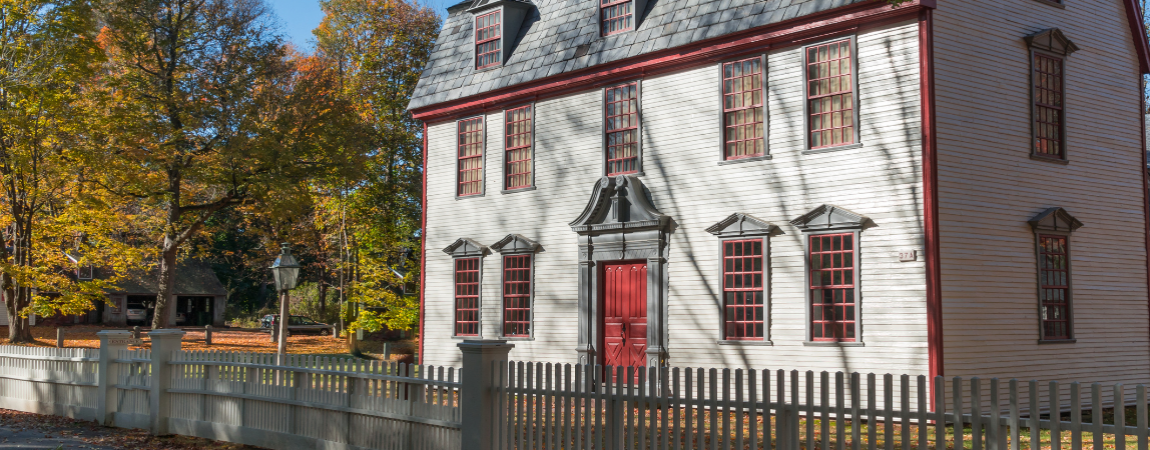
What You Need to Know Before Historical Home Restoration and Painting
Posted on January 5, 2024
Historic homes are beautiful, unique bookmarks of history that require a careful hand to preserve and maintain. Anyone who owns––or has wanted to own––a historic home knows that ample effort must go into preserving the original charm of the home. After all, historical home restoration and painting is a challenging and complex process. Everything from the paint colors, to the paint type, to materials must be planned and executed with knowledge and precision.
Our experienced painters have decades of experience with historical homes and here are to share all of our tips and tricks so you, too, can keep your home of your dreams in its preserved tip top shape.
Common Challenges in Painting Historical Homes and Solutions
As we stated, preserving and painting a historical home is no easy task. As is, there are a few challenges that pop up frequently for homeowners undergoing historical restoration and painting. Here are some of the most common challenges and our tried and true solutions:
- Safety and Environmental Issues: Historic homes are more likely to have unsafe elements, such as lead paint, asbestos, or mold, that can be dangerous to preservers. Additionally, some older homes include unsafe or unstable structures. It is essential you ensure you, your family, and your community are aware of, prepared, and equipped to handle these elements before starting the restoration process.
- Preserving Historical Features: The unique woodwork, ornaments, and fixtures are some of the main reasons we love historic homes. However, these elements are also the most prone to being damaged and altered during restoration if not handled properly. In some cases, certain features will also need to be documented and approved for restoration, so don’t dive into anything too hastily!
- Damaged Surfaces: Historical homes are more than likely to have damaged surfaces, be it the wood floors, the kitchen cabinets, or the textured ceiling. Fixing these surfaces is an essential step before painting. Failure to do so will result in a less durable and cohesive finish.
At the end of the day, the most important thing you can do is research thoroughly before making any changes. We always suggest erring on the side of caution when it comes to historical home preservation and painting.
Preserving the Charm: Historical Color Schemes for Homes
The color of the paint is one of the most important elements of historical home restoration. It is difficult to choose the right color for a normal paint job, but when painting a historic home you also have to consider the style, period, and location of the home. There are a few ways to make choosing the right paint color easier:
- Look at the Records: Check out historical records from the town to see if you are able to find any photographs or documentation that tell what your home’s intended colors were. Libraries and historical societies are great places to look! If you can’t find any of your home, check if you can find homes similar to yours around your area.
- Use Your Resources: There are a few helpful tools online that show you general historic color trends. We definitely recommend doing some diving around online to get a sense of what was popular at the time––just make sure to double check your sources. Additionally, there are professional painters (such as CertaPro Painters®!) that have ample experience with historic home preservation
Choosing Paints That Meet Historical Preservation Standards
The type of paint you use in your historic home is just as important as what color you choose. In some cases, there are historical preservation standards and guidelines you’ll need to follow. Make sure to check national guidelines as well as your local historical society guidelines. These guidelines are all in place to make sure your historic property gets the best quality of paint that helps ensure longevity of your property. Therefore, you should choose paints that are high-quality, durable, resistant, and compatible with your historical home’s surface and substrate.
Restoring Woodwork in Historical Homes with the Right Paint
Woodwork is one of the most defining features of historic homes. There is something special about having elaborate wood features in your home, be it floors and stairs, moldings and trim, or doors and windows. Wood, however, is one of the most delicate parts of historical home restoration and painting. Every step, from cleaning to polishing, requires a careful, and knowledgeable hand. In addition to basic wood services, many historic homes also require repairs to damaged wood. Holes, cracks, and rot are commonly found and absolutely essential to take care of.
Trust CertaPro Painters® with Your Historical Home
At CertaPro Painters®, we understand and appreciate the value and beauty of historical homes. We also understand and respect the challenges and complexities of historical home restoration and painting. That is why we offer professional, reliable, and high-quality painting services for historical homes, tailored to your specific needs and preferences.
Contact us today for a free estimate and consultation, and let us help you bring your historical home back to life.





